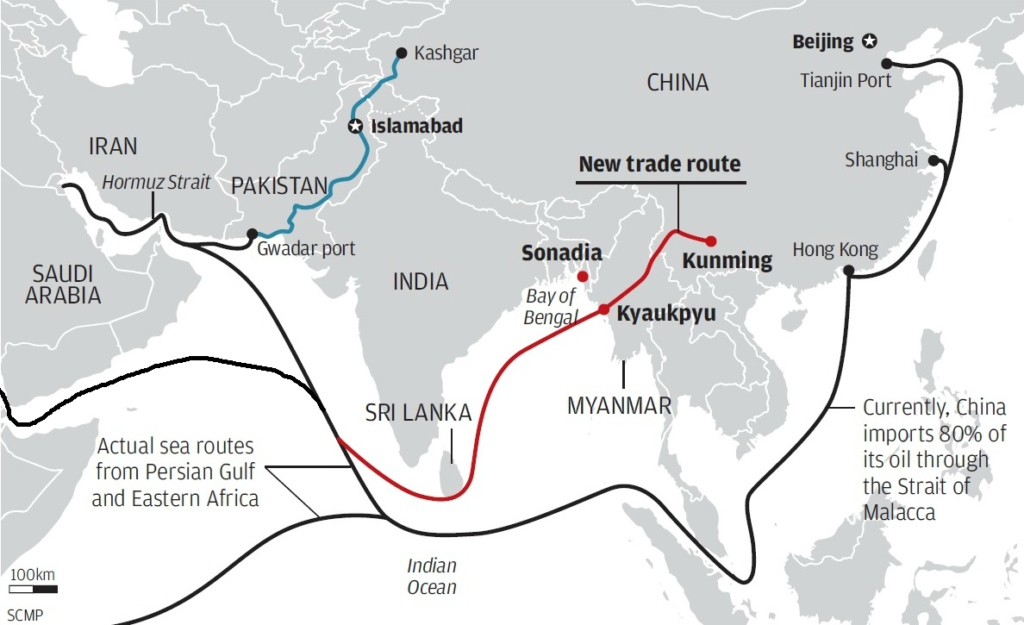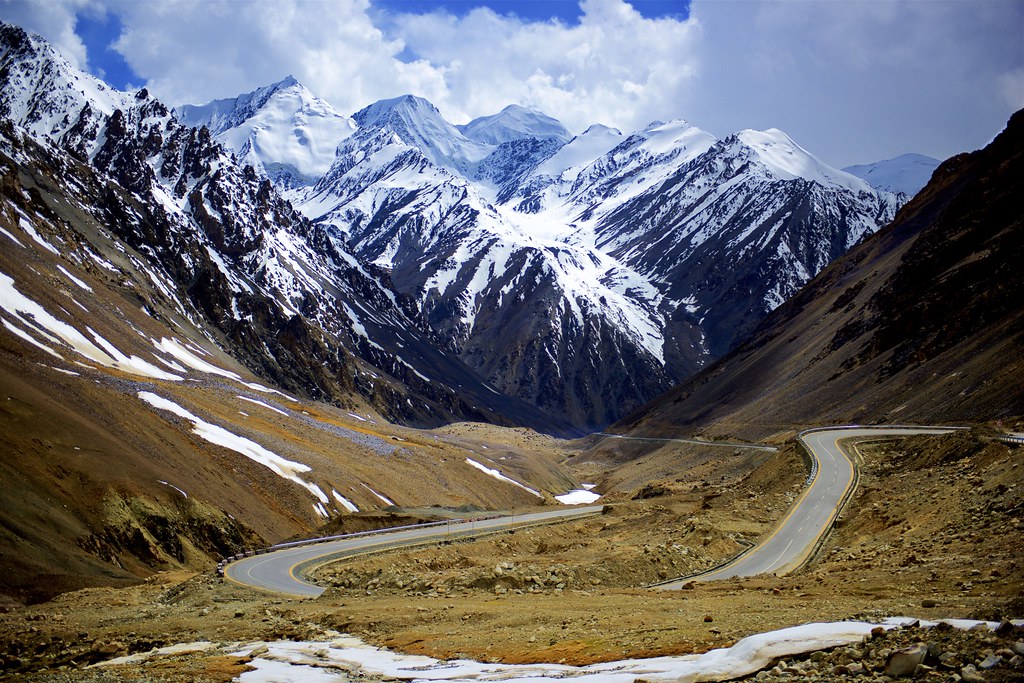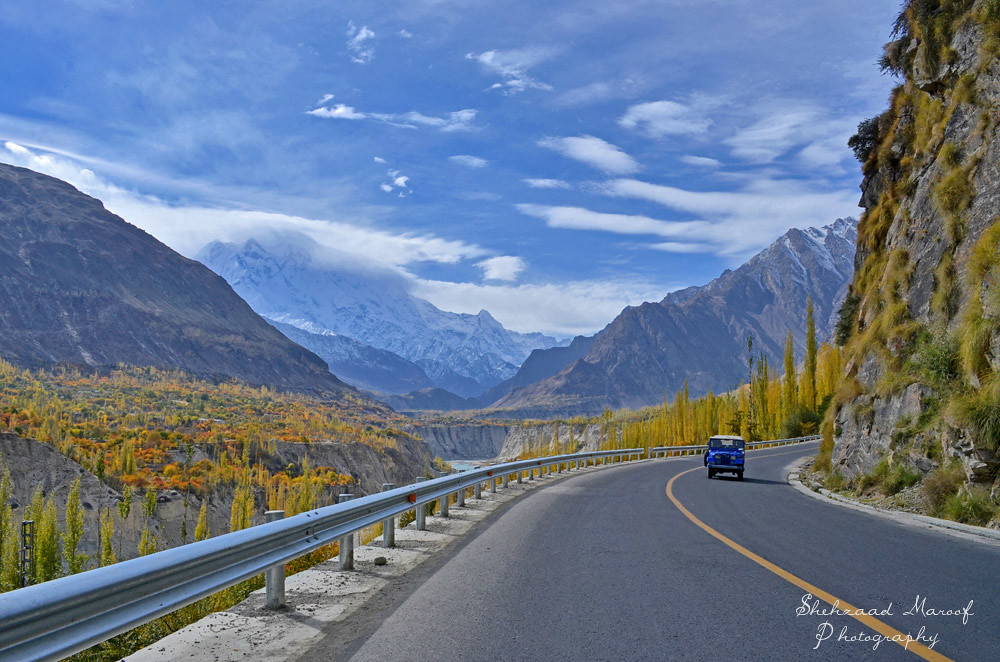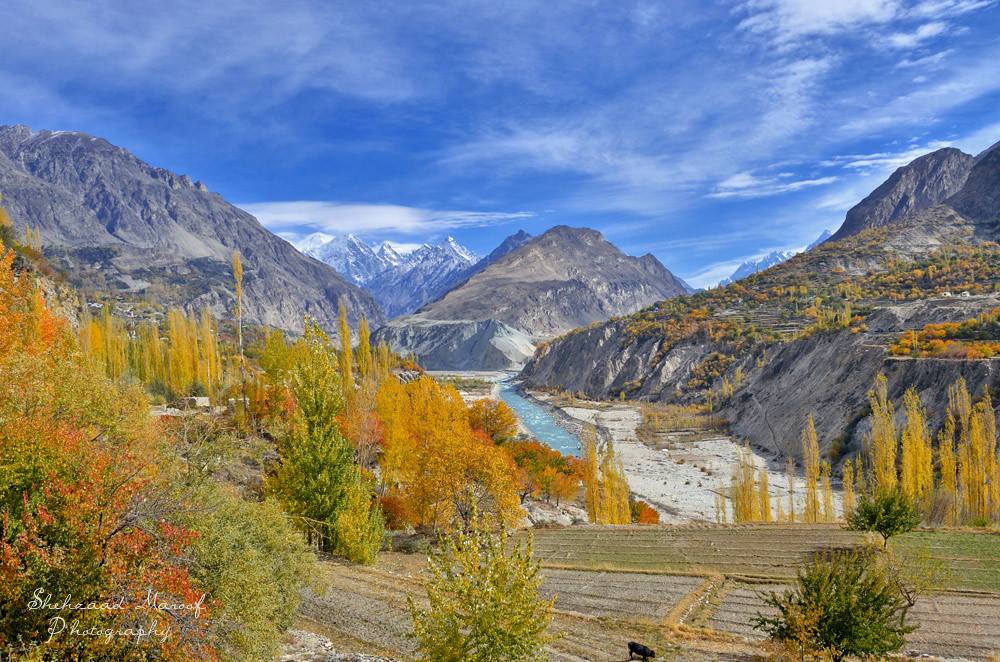Apart from the valley, Kashmir consists of mostly desolate, sparsely populated, mountainous wasteland. Have you ever wondered what could possibly be there that Pakistan finds so attractive, that it risks everything to go after it? How does Pakistan, a semi-failed state with hardly any industry or revenue keep being able to procure high-tech weaponry and infrastructure to aid and abet terrorism while also managing to develop such international clout? And finally, despite wave after wave of attack on its forces in Kashmir, why does India hesitate to go on the offensive and continue with its policy of strategic restraint? It would almost seem that there is some mysterious force out there they are not telling us about, like a black hole or intra-dimensional portal. However, the real fact is something simpler, obvious and clear, whose details are all available in the public domain and so severely overlooked that it is painful. We never want to look beyond the obvious, but in every complex issue like the Kashmir conflict, there are always forces playing in the background, gray areas that people used to seeing things in black and white easily miss.
It turns out that those mountainous wastelands like they always were, are of immense strategic value to a powerful northern neighbor of ours. It is this strategic value that is the “invisible” factor driving the Kashmir conflict apart from the well-known ones like religion, water, ego, and plain hatred. If you look closely at this strategic factor and what its outcome could be, suddenly everything falls into place. Kashmir, Balochistan, the silence of the international community, India’s cold feet, everything. This “factor” is the grand Chinese plan of the CPEC.
[su_note note_color=”#ffeda5″ text_color=”#333333″ radius=”0″ class=””]NOTE: The Kashmir conundrum is an intensely complicated problem that has been going on for the past seven decades. The objective of this post is not to document all of it; this is just a blog post and not a book. This is only about the CPEC and its implication for India, and to make Indians aware of this biggest but less-known challenge to India’s geostrategic ambitions. It has to be said that all outcomes mentioned here are speculation and that much of this could be alarmist nonsense, though facts are verifiable. I am just sharing some stuff that caught my eye.
[/su_note]China’s Geostrategic Disadvantage
China, despite all its grandstanding, has a major handicap. It lacks direct access to the southern seas, especially the Indian Ocean. To access most of the world’s trade hotspots such as the Arabian/Persian Gulf, Africa, and Europe, Chinese vessels have to take an enormously circuitous route negotiating multiple choke points replete with American, British and Indian navies: the entire Indian Ocean, the southern tip of Sri Lanka, the troublesome Strait of Malacca, the mess of islands of South East Asia, the South China Sea. China is at a big disadvantage here. Anyone who can control/squeeze any of these various choke points can hold China to ransom, especially when it comes to its oil. So, wouldn’t it be convenient for China if they had a border on the Indian Ocean as well that would bypass all of that give it direct access to the Arabian Peninsula/Africa? It does not, but Iran, Pakistan, India, and Burma do. What if there were an overland route from any of these countries to China?

The black line shows current shipping routes from China. The red line shows an alternate route via the Bay of Bengal and Myanmar (Burma), while the blue line shows an alternate route through Pakistan. The advantages of these routes are painfully obvious, especially the one through Pakistan. The reduction in distance and transit time will be enormous and would play immeasurably important roles in times of conflict. In addition, the strategic advantage of China being not at the mercy to the powers controlling the Malacca Strait is the primary thought behind this plan. Now, both are real plans, which China believes will help overcome its geostrategic handicap, by getting to build infrastructure on Burmese and Pakistani soil to help transport its shipments easily. In Myanmar, China is building a deep-sea port and SEZ of $280 million at Kyaupkyu on the Bay of Bengal, from where oil will be transported to Kunming in China via a dual pipeline. However, this is peanuts compared to the CPEC.
So what is the CPEC?
The CPEC or the China-Pakistan Economic Corridor is a collection of massive infrastructural projects in Pakistan, consisting of ports, roads, railways, and support systems to connect China with the Arabian Sea through Pakistan with the intent of enabling fast movement of cargo between the Middle East, Europe, Africa and Western China through Pakistan. The core of the CPEC is transport infrastructure. Massive highways and railways diverge from the Gwadar Port near on the Arabian Sea near the Iranian border, which after taking different routes through Pakistan will converge near Islamabad and continue on as the Karakoram highway and railway across the Himalayas to reach Kashgar in the western Chinese province of Xinjiang. Here are some of CPEC projects.
[su_note note_color=”#ffeda5″ text_color=”#333333″ radius=”0″ class=””]
- The Gwadar deep-sea port and city complexes including a huge international airport (A380 capable).
- The Karakoram Highway and Khunjerab Railway from Kashgar, Xinjiang, China to Rawalpindi in Pakistan across the Karakoram mountain range of the Himalayas.
- Construction and upgrading of Pakistan’s highway systems and railway lines to connect Gwadar with the Karakoram highway:
- Four to six lane highways from Gwadar to the outskirts of Islamabad via Quetta, 280 km of which will be access controlled (Western Alignment).
- Six-lane highways from Karachi to Lahore via Hyderabad and Multan, much of which will be high-speed, access controlled (Eastern Alignment).
- Expressway from Gwadar to Dera Ismail Khan to connect to Islamabad.
- The Karachi – Lahore – Peshawar Main Railway Line 1 to will be almost entirely reconstructed to allow 160 kph top speeds and 25-ton axle loads.
- Main Railway Lines 2 and 3 will also be upgraded and improved.
- A new 560 km railway new line across Balochistan and Sind will be constructed.
- More highways, roads, and railway lines connecting these corridors.
- Construction of Lahore Metro’s Orange line, for some reason.
- Construction of a large number of new solar, hydro, wind, thermal and nuclear power plants and associated transmission infrastructure to generate over 10000 MW of electricity.
- Gas pipeline from Asaluyeh, Iran to Multan in Pakistan.
- Optic fiber cable backbone being laid from Rawalpindi in Pakistan to the China border.
- Hospitals, schools, institutes, research centers, laboratories etc.
And all this will be constructed either free of cost or for ridiculously cheap loans for Pakistan by China in exchange for exclusive usage rights for as of now, forty years. In short, the CPEC is a great, big Chinese gift box for Pakistan, to enable swift and easy movement of Chinese trade freight through Pakistan. That said, the CPEC is excellent news for Pakistan’s people, who will get jobs, their economy will grow, they will get awesome roads and trains. Well, congratulations to them!
How does the CPEC help China?
The Gwadar port is just 400 km from the coast of the Sultanate of Oman and only 500 km from the strait of Hormuz, the outlet of ALL of middle eastern oil. An average oil tanker will take only 12 hours to reach Gwadar from the horn of Hormuz, as opposed to around a couple of months around the Malacca Strait. Tankers and freighters docking at Gwadar can have their cargo transported rapidly across Pakistan and through to China by means of enormous highways and high-capacity railway lines in just over a week. The CPEC also provides China proximity to Africa and to the ports of its new Indian Ocean friends like Sri Lanka and Myanmar. China has enormous interests and investments in businesses and natural resources in Africa to a level that they today practically own much of the Dark Continent. The eastern African coast is only 1000 km from Gwadar, just a day of voyage away
Though the savings in time will be substantial, a primary transport objective of the CPEC will be not to deliver oil to Shanghai, but to improve the remote western regions of the country. The Chinese economy has been growing at a too fast a pace since the late 1970s and has hit a ceiling today as its eastern provinces housing China’s major economic hubs like Beijing, Shanghai are saturated, and any more growth there will be hard to come by. So, China is now trying to keep the economy growing by developing its eastern provinces. These areas are underdeveloped as they lack import/export facilities since they are thousands of kilometers away from any port. Hence, the CPEC. The added bonus is the huge Pakistani market being flooded by Chinese goods. Indigenous Pakistani industries (if any) will be doomed.
However, the primary overall objective of the CPEC remains strategic. And as it was then as it now, control of the Indian Ocean and the Arabian Sea has always resulted in huge strategic advantages. With the CPEC China can send the message that it will only laugh in the face of any military aggression against it in the Indian Ocean.
The Incredible Karakoram Highway (KKH)
The most spectacular and most important part of all of the CPEC is the Karakoram Highway, the road that directly connects northern Pakistan with China through Kashmir. The KKH starts at Hassanabdal near Islamabad off the Grand Trunk Road and proceeds north past Mansehra and Abbottabad, after which it enters POK and then runs up the mountains past Chilas, Gilgit and Baltit, across the Karakoram mountain range to reach the Khunjerab Pass to enter China, and 400 more kilometers later ends at Kashgar. This road is an incredible feat of engineering, a four-lane highway across some of the highest, most inhospitable and difficult terrain on the planet! The CPEC might seem a recent invention, but the idea goes back decades, centuries, even millennia.
The Karakoram highway was since ancient times a part of the Silk Road, where goods from China made their treacherous journey down towards India, and China looks to revive that ancient legacy to reaffirm its place as the leader of Asian trade. The idea of building a road along this route from China to the Arabian sea had existed since forever and was first formally suggested in 1950. The building of a single-lane road through the desolate, uninhabited but beautiful mountains of Karakoram started in 1959 and was completed in 1979, totaling 887 kilometers through Pakistan and POK. Starting 2014, it is being reconstructed as a proper two/four lane highway capable of heavy traffic, passing through a number of tunnels and bridges.
[su_note note_color=”#ffeda5″ text_color=”#333333″ radius=”0″ class=””]The Khunjerab Pass through which the KKH enters POK from China holds much significance for India. Everyone knows Kanyakumari as the southernmost point of India, but nobody really knows what the northernmost point of India is. If you take absolutes, the real northernmost point of India is this place here bordering China, some kilometers away from the border with Afghanistan. However, there seems to be nothing up there but snow, so the northernmost point for all practical purposes is the Khunjerab Pass, the China-India (POK) border crossing. At 4600 m altitude, it is the highest international border in the world. POK as a whole, Gilgit-Baltistan in particular and the Hunza valley especially is an extremely, devastatingly beautiful and mysterious place, but sadly, we Indians will never know it :(
[/su_note]Ever since it was founded three millennia back until its disintegration under the Mongol hordes, the ancient Silk Road kept Central Asia and China dominant in world finance and trade. Now, China wants to re-establish that position by building a new Silk Road, though which will be mostly rail, a network of trade railway routes extending from Hong Kong and Shanghai to Moscow and Rotterdam and everything in between. Remember the China-Spain cargo train? And the CPEC is only one of the many corridors under China’s new Silk Road plan. And, China might consider India a competitor, rekindling one of the world’s most ancient business rivalries. And the Karakoram Highway is the biggest geostrategic tool they will use to this end.
How China Plans to Undermine India Using Kashmir
On October 26, 1947, Maharaja Hari Singh signed over all of the princely state of Kashmir over to the new Indian nation. 70 years and four and a half wars later, Kashmir has been significantly disfigured with Pakistan and China occupying substantial portions of the ancient mountainous state. Its northernmost parts are occupied and administered by Pakistan and are commonly referred to as Pakistan Occupied Kashmir or POK, mainly consisting of the areas of Gilgit-Baltistan. It is this border combined with the Karakoram highway that makes the CPEC so vital as far as India is concerned. Take a look at the alignment of the Karakoram Highway. The highway is the red line, the thick black line is the 1947 borders of the state of Jammu & Kashmir (and India) and the blue line is the Line of Control (Simla agreement, 1972), anything north of which is occupied by Pakistan. Take a look at the area inside the blue oval.
Image Courtesy: Wikipedia (edited) | Tweet this Image
That is right. The Karakoram Highway and thereby the CPEC runs right through the heart of Pakistan Occupied Kashmir! In other more devastatingly eye-opening words, Pakistan is physically connected to China right through Kashmir, and thereby through India, and otherwise, do not share a boundary! So, the success of the CPEC, all of China’s grand strategic designs in the Indian Ocean, expanding its economy beyond the saturated Eastern seaboard and so on all squarely depend on the Karakoram highway, the existence of which in turn squarely depends on POK continuing to be occupied by Pakistan. If India were to take back POK we would in all possibility squeeze the KKH shut, and all of China’s ambitious plans would go, poof! No more CPEC or strategic advantage or even a China-Pakistan border! In addition, India would gain legitimacy at its claim of Aksai Chin (Chinese occupied Kashmir) and its direct border with Afghanistan, both of which will seriously dent Chinese ambitions in Central Asia. For all these reasons, China would want POK to remain in Pakistan hands. And, the best way to keep India off POK would be to keep it engaged and bleeding in the Kashmir valley. IF India were to attain peace and the backing of the people of the Kashmir valley, India MIGHT start to think seriously about taking back POK and the so-called Azad Kashmir, armed with much international credibility. And that is the whole game.
There is more. With the CPEC, China has sunk around 45-50 Billion US Dollars in Pakistan which makes it an enormous monetary investment. With the CPEC, China has generated 700,000 jobs in Pakistan and now owns close to 20% of its GDP! Pakistan’s economy is today so Chinese that you can think Pakistan to be the 24th province of China. With so much invested and at stake, it is only common sense that China wouldn’t even think twice about ruthlessly suppressing any attack on Pakistan to safeguard their strategic and economic position, and any nation which belligerents Pakistan will in all probability have to face not just them but China as well, surreptitiously surely, if not openly. India knows this, and maybe, this is why it hesitates to strike at Pakistan.
The Dynamics of International Relations
In a case where push came to shove, who would support India? Probably no one. Russia/USSR was once upon a time our “close friend”, but things have been going downstream lately with Putin not being amused at India pandering to the USA and taking all its business westward, ignoring Russia. The USA might want to work with India at checking Chinese influence in the Indian Ocean, but despite all the tensions between them, USA has way too many entrenched interests in China. American corporations have invested about 75 billion dollars in China and that they will not allow jeopardizing any of that. The USA (and its allies) will look the other way, and Europe too for the same reasons and more. And all of the Middle East will (clandestinely) support Pakistan for obvious reasons. And we are surrounded by the String of Pearls, the circle of Chinese influence in the Indian Ocean, by which China is encircling us with its friends. Sri Lanka, for instance, is extremely friendly with China these days. Any chance of us having any friendly relationships with Sri Lanka effectively ended with Rajiv Gandhi.
Common people seem to think that international alliances are formed on emotional bases like how high school friendships are formed. Not so. Geopolitical alliances are extremely complicated matters and are formed only to safeguard or forward a country’s or its people’s strategic or economic concerns on an international level. Or simply, it is all and only about business, and not of virtue or even religion, like the supposedly all-weather friendship between China and Pakistan. All CPEC projects are even known as China-Pakistan “friendship” something or the other. However, China is “friendly” with Pakistan only to forward its business interests there. If we had bought F-22s instead of Sukhois or if we had allowed USAF free flying rights over our airspace and maybe allowed them to use some of our airbases and ports, Obama would have been making many more trips to India.
So, what will it take for world nations to support India? What we should be asking is, what strategic advantage can we bring to the table? The world panders to Pakistan because the USA does so. Uncle Sam loves Pakistan’s location, which it can use as a leverage against Iran, Afghanistan, China, and Russia. India is not attractive as an ally because we for many decades were extremely hostile to the USA, we do not advertise our strategic location advantage and we have nothing valuable or natively unique to offer our allies. And if we were to become an ally of USA, we would have to sign over our military bases and airspace and so on to Uncle Sam anyway.
Geopolitical Realities Of the Kashmir Issue
All this takes nothing away from the fact that the Pakistani ISI-Military-Jihadist complex remains the primary troublemaker in Kashmir, with the primary objective to break India by force or subversion. But they have a friend now. Of course, China did not light the Kashmir fire, but it certainly looks like it is in their interest to keep it burning so that no consensus is reached. It is obvious that the CPEC can be used as a tool by Pakistan to further its attacks on India, which boils down to using Chinese money to attack us! And all that infrastructure being built in Pakistan does not bode well for India either. What many people do not realize is that massive highways, expressways and rail lines are really military installation conduits, for which civilian use is just a bonus. Even the American Interstate was conceived by Eisenhower as a means to quickly move American troops (to the coasts) in the case of an attack on the USA. India needs to build up such infrastructure here as well.
We keep on reiterating that POK is an integral part of India. But despite all our claims, most nations and maps show the LOC as the international boundary, and all articles and reports describe POK as just “Pakistan” and not even as Pakistan-administered, much less Pakistan-occupied. It seems that for all practical purposes, the world accepts Kashmir to be part of Pakistan! What India needs to do first is get POK back under Indian administration. What we need to understand is that by compromising on any of our claims on Kashmir we will be kissing our dreams of a strong economic future goodbye as we will be only surrendering to Chinese hegemony for good. Pakistan does not matter, it is now a completely failed state unable to stand on its own, propped up by China and USA and doing what it is asked to do. China is probably waging a double-proxy-deceptive war against us, which we cannot prove or even recognize. Our geostrategic goals should now be maneuvered to deal with both of them.
Of course, India knows all this, and I am sure that our country has great brilliant minds working on this, and they will do us proud. The bottom line here is that war is not an option (I renege on my earlier stand, which was driven by emotion) because we can’t afford to sacrifice our economy, not with all the Chinese interests in Pakistan, because today it is not Pakistan, but China and war will only drive us further into the hole.
Addendum: Why Pak got all worked up when India raised Balochistan: Gwadar is in Balochistan. Much of CPEC infra passes through Balochistan.
— vadakkus (@vadakkus) September 19, 2016
The mighty mountains of Asia, beautiful, wild and desolate, have since ancient times been the fatal siren song for many an empire that dreamed of taming and capturing their riches. Having been witness to many a great game and some of the most turbulent incidents in world history, the Hindukush, Pamir, Karakoram and the Himalayas are replete with scattered remains of powerful kings and vast armies, from the Persians, Chinese and Greeks to the British and the Soviets, all of whom lusted after the great power and glory the control over the mountains would bring. But, in the end, every single foreign power have always had their ambitions cut mercilessly as every invading force was lured to their graves, as the mountains always reverted back to their natural civilizations. That natural civilization is India. These mountains are India, that eternal land of ancient sages and scriptures, that will always come home in the end.









I hear nearby satellites have to present their passports before continuing along their orbits.
Corrected, thank you. Flattered to know that people pay such close attention to the stuff I write ;)
Oh I’m a long term fan, I enjoy reading your well researched and detailed posts :)
Oh wow thanks! :)
Witty humor!